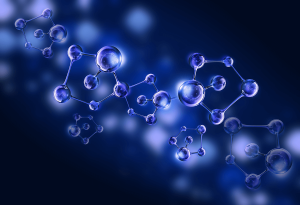Molecular physics, a branch of physics that studies the behavior of molecules and the chemical bonds between atoms, has undergone a remarkable evolution over the centuries. From its humble beginnings in the early studies of matter to its pivotal role in modern scientific advancements, the journey of molecular physics is rich with discoveries, challenges, and possibilities.
Introduction to Molecular Physics
Molecular physics delves into the intricate interactions and dynamics at the molecular level, exploring phenomena such as molecular structure, spectroscopy, and molecular dynamics. It provides the foundation for understanding the properties and behaviors of matter, paving the way for numerous scientific and technological breakthroughs.
Historical Background
Early Studies and Discoveries
The roots of molecular physics can be traced back to ancient times when philosophers pondered the nature of matter. However, it wasn’t until the 19th century that significant strides were made in understanding molecules and their behavior. Pioneering experiments by scientists like John Dalton and Amedeo Avogadro laid the groundwork for modern molecular theory.
Key Figures in Molecular Physics

Throughout history, several notable figures have shaped the course of molecular physics. From Dmitri Mendeleev’s development of the periodic table to Linus Pauling’s contributions to chemical bonding theory, these individuals have left an indelible mark on the field, inspiring generations of researchers to unravel the mysteries of molecules.
Fundamental Concepts in Molecular Physics
Atomic Structure
At the heart of molecular physics lies the structure of atoms, the building blocks of molecules. The discovery of the electron by J.J. Thomson and subsequent advancements in quantum mechanics revolutionized our understanding of atomic structure, laying the foundation for modern molecular theory.
Molecular Bonding
The bonds that hold atoms together in molecules are central to molecular physics. From covalent bonds to hydrogen bonding, the study of molecular interactions provides insights into the stability, reactivity, and properties of chemical compounds.
Thermodynamics
Thermodynamics plays a crucial role in molecular physics, governing the energy transfers and transformations within molecular systems. Concepts such as entropy, enthalpy, and free energy are essential for understanding the behavior of molecules in different physical and chemical environments.
Quantum Mechanics
Quantum mechanics provides the theoretical framework for describing the behavior of particles at the molecular level. From wave-particle duality to quantum tunneling, the principles of quantum mechanics underpin our understanding of molecular structure, spectroscopy, and dynamics.
Various Fields
Molecular physics finds applications across a wide range of disciplines, driving innovations in chemistry, materials science, biology, and engineering.
Chemistry
In chemistry, molecular physics contributes to the design and synthesis of new compounds, the study of chemical reactions, and the development of molecular modeling techniques.
Materials Science
In materials science, molecular physics plays a vital role in understanding the properties and behavior of materials at the atomic and molecular levels, enabling the design of novel materials with tailored functionalities.
Biology

In biology, molecular physics intersects with fields such as biophysics and biochemistry, providing insights into the structure and function of biological macromolecules and facilitating advancements in areas like drug discovery and molecular imaging.
Engineering
In engineering, molecular physics informs the design and optimization of nanomaterials, semiconductor devices, and energy storage systems, driving progress in fields such as nanotechnology, electronics, and renewable energy.
Technological Advancements
Computational Methods
Advancements in computational methods have revolutionized molecular physics, allowing researchers to simulate complex molecular systems with unprecedented accuracy and efficiency. Molecular dynamics simulations, quantum chemical calculations, and machine learning techniques have become indispensable tools for studying molecular structure and behavior.
Experimental Techniques
On the experimental front, innovations in spectroscopy, microscopy, and imaging have expanded our ability to probe molecules with high precision and resolution. Techniques such as X-ray crystallography, nuclear magnetic resonance (NMR) spectroscopy, and single-molecule imaging have opened new avenues for exploring the molecular world.
Current Trends and Research Areas
Nanotechnology
Nanotechnology, which involves manipulating matter at the nanoscale, presents exciting opportunities for molecular physics. Researchers are exploring the synthesis of nanomaterials, nanodevices, and nanomedicines, pushing the boundaries of what is possible at the molecular level.
Molecular Dynamics
Molecular dynamics simulations are increasingly being used to study complex biological systems, such as proteins and nucleic acids, at atomistic detail. These simulations provide insights into molecular interactions, conformational changes, and dynamic processes relevant to biological function and disease.
Biophysics
The field of biophysics, which bridges physics and biology, continues to grow as researchers investigate the physical principles underlying biological phenomena. From understanding protein folding to elucidating the mechanics of cellular processes, biophysicists are unraveling the mysteries of life at the molecular level.
Challenges and Limitations
Complexity of Systems
One of the major challenges in molecular physics is the inherent complexity of molecular systems. As molecules become larger and more complex, accurately modeling their behavior becomes increasingly challenging, requiring sophisticated computational methods and experimental techniques.
Experimental Constraints

Experimental studies in molecular physics often face constraints related to sensitivity, resolution, and sample preparation. Overcoming these limitations requires innovation in instrumentation and methodology, as well as interdisciplinary collaborations across scientific disciplines.
Future Prospects
Emerging Technologies
Looking ahead, emerging technologies such as quantum computing, DNA nanotechnology, and single-molecule manipulation hold promise for advancing molecular physics. These technologies could revolutionize our ability to manipulate and control molecules with unprecedented precision, opening up new frontiers in science and technology.
Interdisciplinary Collaborations
Collaborations between physicists, chemists, biologists, and engineers are essential for addressing complex challenges in molecular physics. By combining expertise from diverse fields, researchers can tackle interdisciplinary problems and drive innovation in areas such as drug discovery, materials design, and molecular electronics.
Conclusion
In conclusion, the evolution of molecular physics has been marked by significant progress and profound insights into the nature of matter and its interactions. From early theories of atoms and molecules to cutting-edge technologies like nanotechnology and biophysics, the field continues to push the boundaries of scientific knowledge and technological innovation.
__________________________________________________________________________
FAQs
What is Quantum Dynamics ?
Quantum Dynamics is a branch of physics that studies the behavior of molecules and the chemical bonds between atoms.
How does Quantum Dynamics contribute to other disciplines?
Quantum Dynamics finds applications in chemistry, materials science, biology, and engineering, driving innovations across various fields.
What are some challenges in Quantum Dynamics research?
Challenges in Quantum Dynamics include the complexity of molecular systems and experimental constraints related to sensitivity and resolution.
What are emerging technologies in Quantum Dynamics?
Emerging technologies such as quantum computing, DNA nanotechnology, and single-molecule manipulation show promise for advancing Quantum Dynamics.
Why are interdisciplinary collaborations important in Quantum Dynamics?
Interdisciplinary collaborations allow researchers to address complex challenges and drive innovation by combining expertise from diverse fields.




